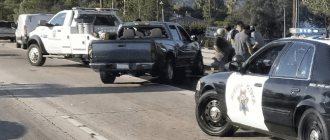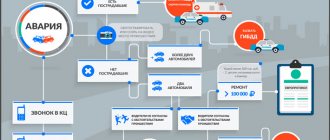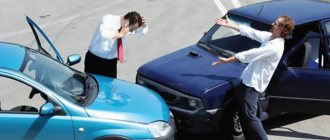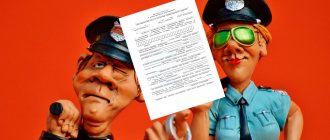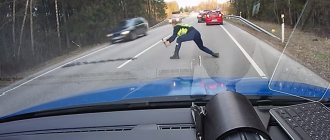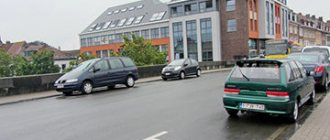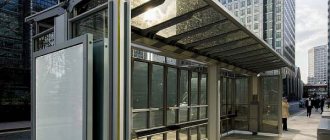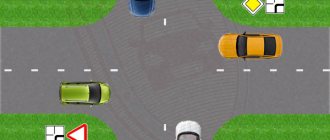Do you need to call the traffic police in case of an accident?
Not all road accidents require the personal presence of traffic police inspectors. When can you do without them?
Attention! If you have any questions, you can chat for free with a lawyer at the bottom of the screen or call Moscow; Saint Petersburg; Free call for all of Russia.
- There were no injuries in the accident.
- No state property was damaged.
- No more than two cars are involved.
- Participants have valid MTPL policies.
- There is no dispute about who caused the accident.
If all these points come together, then it is possible to register a traffic accident without inspectors. In this case, a European protocol is drawn up. If there are disagreements or inconsistencies with at least one of the points, then the traffic police must be called to register the accident.
Rules for registration of road accidents by traffic police officers
If it is decided to call representatives of the State Traffic Inspectorate to the scene of the accident, then they must register the accident according to the following rules.
- A traffic police inspector arrives at the scene.
- Examines him and takes the necessary measures to investigate the situation. He is obliged to interview witnesses and secure the scene of a traffic accident, if necessary.
- All necessary measurements are taken and a road accident diagram is drawn up.
- The protocol is filled out. In this case, the employee must fill out the document extremely carefully and objectively.
- The protocol is checked by the participants and if they agree with the entered data, they sign it.
In the event that one of the participants does not deny his guilt, none of the drivers have any disagreements, there are no injuries and no state property is damaged, the traffic police representative can only testify to the existence of a traffic accident. He may not draw up any documents on the spot, but send the participants in the accident to the traffic police department so that the accident can be processed by the investigation team. In addition, this procedure is often used in order not to create obstacles for the movement of other vehicles. After all, often the crew simply does not have time to quickly register all the accidents on the spot and the victims have to wait for long hours at the scene of the accident.
Algorithm of actions when registering an accident without victims
If the consequences of a road accident are expressed only in damage to the integrity of the participating vehicles and there are no injured people, then the event can be registered by a traffic police officer without the involvement of other authorized persons. His responsibilities include receiving explanations from drivers and putting them in writing. After drawing up a diagram of the accident and identifying the degree of guilt of the participants in the incident, he draws up a protocol of the administrative offense, which is signed by the guilty person.
The regulations on the procedure for the actions of a traffic police officer provide for the need to conduct an examination for alcohol intoxication. The procedure allows you to determine the presence in the body of traces of alcohol or drugs, under the influence of which the driver was at the time of driving.
The traffic rules provide for the deprivation of the right to drive a vehicle for violations of the provisions of the rules. The inspector has the authority to apply such a measure at the scene of the accident if the driver’s offense, which resulted in an accident, is subject to such punishment by law. After the driver's license is confiscated, the authorized officer must issue a temporary permit in return, which is valid for 30 days.
What documents are required when registering a traffic accident?
When registering an accident by traffic police inspectors on site or at the department, the following documents are issued:
- An administrative violation order is issued if traffic rules were violated during the incident.
- Road accident report – it is accompanied by a road accident diagram, which schematically depicts the situation that occurred on the road. Such a diagram should be drawn up using measuring instruments, as well as the words of participants and witnesses. In addition, an appendix indicating mechanical damage to vehicles is attached to the protocol. Explanations of participants and eyewitnesses are also attached to the protocol.
Read all documents carefully and check all data.
The procedure for registering an accident by state traffic inspectors
After traffic police inspectors arrive at the scene of a traffic accident, they must act as follows:
- Inspect the accident site and damaged vehicles.
- Interview the participants in the accident about the circumstances of the accident, write down their data.
- Record it in a photo and draw up a diagram of the accident.
- Draw up a report on the accident.
Such actions are carried out when drivers disagree about the culprit. If there are such disagreements, then the traffic police representatives try to find witnesses to the accident, as well as obtain recordings from CCTV cameras or DVRs, if any are available at the scene of the incident.
Rights and responsibilities of state traffic inspectors
Regulatory legal acts regulate the rights and obligations of inspectors when registering road accidents. It is the duty of employees to promptly arrive at the scene of an incident immediately after receiving a call. They must make every effort to preserve traces of the accident and the location of individual objects at the scene until photographs and videos are taken to record the circumstances of the event. After arriving at a call, inspectors must first make sure that there are no victims who need emergency assistance. Within their competence:
- Calling a doctor;
- Delivery of victims to the hospital using official vehicles, in which the employee arrived at the scene of the incident;
- Organizing assistance in delivering the victim to a medical facility by involving passing drivers.
Traffic police officers, having arrived at the specified address, must establish the identity of the drivers, as well as determine the fact that the vehicles involved in the accident belong to the category of property of the persons driving them at the time of the incident. They have the right to demand the presentation of documents identifying the identity of drivers and witnesses, as well as identifying the parameters and characteristics of the vehicles involved in the accident. If the participating vehicles escape from the scene of the incident, representatives of the traffic police must establish the probable direction of their movement and transmit to the duty station the information necessary for arrest.
What is a traffic police officer required to do when reporting an accident?
- Traffic police inspectors are required to promptly arrive at the scene of the accident.
- Examine the participants and victims. If necessary, call an ambulance or send victims to medical facilities. If necessary, provide first aid until paramedics arrive.
- They are obliged to objectively and impartially understand all the circumstances of the traffic accident. Find witnesses, write down their information.
- If the arrival of a natural response team is expected, they are obliged to ensure the presence of drivers and victims on site.
- Take measures to preserve and record physical evidence that is relevant to the situation.
- Organize a detour or monitor the situation on the road, regulating the movement of cars.
- If one of the participants disappeared, find out the direction of his movement, the characteristics of the car and transfer this information to the duty officer.
Procedure for registering an accident with victims
If, as a result of a road accident, bodily injuries to drivers, passengers or pedestrians were recorded, then the event must be documented by a traffic police inspector, whose competence is responsible for organizing the departure of an operational-investigative group, which includes specialists: an operative, an expert, an investigator and a doctor. All paperwork is completed by the commission based on the results of highly specialized activities in the field of investigation. All procedures can be performed by a representative of the traffic police in the event that the operational investigation team cannot go to the scene of the accident for a valid reason.
An investigator works at the scene of the accident, whose responsibilities include inspecting the accident site and talking with drivers. All testimony is documented and analyzed by the commission, after which a protocol for examining the scene of the incident is drawn up. Upon completion of the investigator's work, the affected vehicles may be removed from the roadway. Operational officers are engaged in searching for witnesses and obtaining explanations from them. The function of an authorized traffic police specialist is to organize the commission’s visit and issue a certificate of an accident.
Features of registration in case of an accident with victims
Situations where people suffer during a traffic accident are not uncommon. If this happens to you, whether you are the culprit or not, follow the following procedure.
- First of all, provide first aid to the victim in the event of an accident and call an ambulance. This is a priority action that should be performed even if the victim claims that he does not need help, he feels well and the injuries will not harm his health or life. If the victim is in critical condition, he must be taken to the hospital without waiting for an ambulance. To do this, you can use a ride or your own transport.
- After calling an ambulance, call the police. When communicating with the duty officer, be sure to inform that there is a victim in the accident. In this case, State Traffic Inspectorate employees who specialize in such incidents will be sent to the scene of the accident.
- After traffic police representatives arrive at the scene, they will draw up a protocol, describing the situation, and provide it to all participants in the accident for signature. Please read it carefully. If you do not agree, make your comments and corrections. If you feel unwell, please note this in the protocol. Sign the document only if you completely agree with it.
- After drawing up the protocol, the employee will ask all participants in the accident to write explanations. Remember that you do not have to testify against yourself, your spouse, or your immediate family. Write the explanation yourself, do not ask the traffic police officer to help you. In addition, write only true facts, do not make any assumptions, do not admit your guilt or draw conclusions about the guilt of other participants.
After all the registration, the employee will give all participants a copy of the accident report. Remember that it should not contain any conclusions about the culprit, since inspectors are not authorized to make such decisions, the forensic medical examination is responsible for this.
Actions of traffic police officers at the scene of an accident
In case of a traffic accident, the traffic police inspector is obliged to:
1. Any traffic accident that becomes known to a traffic police officer, including if it was committed outside his post or patrol route, he reports to the duty station and subsequently acts in accordance with the instructions received, and in urgent cases ( accident with serious consequences, etc.), immediately goes to the scene of the incident.
Upon arrival at the scene of the incident, traffic police officers must wear yellow vests with reflective elements; the scene of the incident must be fenced off with traffic cones and road signs 4.2.1 “Avoiding obstacles on the right” or 4.2.2 “Avoiding obstacles on the left.”
2. When directly receiving a report of an incident, the traffic police officer is obliged to listen carefully to the applicant and record:
- last name, first name, patronymic, address and telephone number of the person who reported the incident;
— place, time, type and circumstances of the incident;
— information about the victims;
— information about the provision of medical care to victims;
— to which medical institutions and by whom the victims were sent;
- type, make, color and state registration plates of the vehicles in which the victims were transported;
— information about the vehicles involved in the incident.
3. Before the investigative team arrives at the scene of an incident in which people were injured, a traffic police officer:
— determines the number of victims, comparatively assesses the severity of their condition, and calls emergency medical care. Before her arrival or if it is impossible to call, she personally provides first aid and, if necessary, organizes delivery to medical institutions. Finds out the last names, first names, patronymics, place of residence (place of work) of the victims;
- must control the installation of emergency signaling devices provided for by the Road Traffic Rules, if necessary, set additional ones, as well as turn on special light signals, provide mutual insurance;
— takes measures to preserve and record material evidence, traces, property and other items related to the incident, in compliance with measures to ensure the safety of all participants in the accident;
- identifies the drivers whose vehicles were involved in the incident, and other persons involved in it, detains in the prescribed manner the driving documents of the participants in the incident;
— ensures the presence of these persons at the scene of the incident until the arrival of the investigative team or until the completion of the registration of the incident;
— identifies witnesses to the incident, interviews them about the circumstances of the incident and records their identifying information;
- reports information about the persons involved in the incident and witnesses to the head of the investigative and operational group (prosecutor, investigator, employee carrying out the inquiry) who arrived at the scene, transfers material evidence and subsequently acts on his instructions;
- organizes, if necessary, the movement of transport in a detour, and if it is impossible to do this, records, by drawing up a diagram of the incident in the presence of two witnesses and participants in the incident, the location of vehicles, traces of movement and braking, and other objects related to it, and then takes measures to resumption of movement.
4. Finds out if the driver of the vehicle fled the scene of the incident:
— the probable direction of its movement;
— brand, type, state registration plate, color;
— special features of the vehicle and driver.
The traffic police officer immediately reports the information about the escaped vehicle and driver obtained during inspection of the scene of the incident and interviewing witnesses to the duty officer of the combat unit or internal affairs agency, and subsequently acts in accordance with their instructions.
5. When preparing materials on an incident with a vehicle in which there are persons enjoying immunities and privileges, if they do not need medical assistance, a traffic police officer invites the driver to be present when compiling materials on this incident.
If the driver or any of the passengers expresses reluctance to be present during the preparation of materials, he writes down the necessary information about the participants in the incident and allows them to leave. In such cases, a record of the reason for the driver’s absence is made in the report of the inspection of the scene of the incident and signed by the compiler of the report and two witnesses.
6. Registration of materials about violations of the Traffic Rules that resulted in damage to vehicles, cargo, roads, road structures or other property and caused only material damage is carried out by a traffic police officer with the permission or at the direction of the commander of the combat unit, his deputies or the duty unit in accordance with the procedure established by the internal affairs bodies for proceedings in cases of administrative violations and other norms in force in the field of road traffic.
Refusal to register an accident
Can the traffic police officers who arrived at the scene of an accident refuse to register your accident? The answer is clear - no. Remember that even if your situation falls under all points of the European Protocol, you have the right to call the State Traffic Inspectorate. They cannot refuse you on the basis that the accident caused minor damage to the cars, since they are not experts and cannot determine the cost of damage by eye. There are often situations when, for example, a minor dent leads to internal damage and only a professional appraiser can determine the cost of such damage.
If a traffic police officer refuses to register an accident, then you can write a complaint in any form and send it to senior management.
Features of registration of a traffic accident by traffic police officers
If people, state property are injured, or it is impossible to identify the culprit, then there is no doubt about the need to call the State Traffic Inspectorate. Even if there are at least minimal doubts about the damage, the culprit and other circumstances, it is still better to call the traffic police duty department rather than draw up a Europrotocol yourself.
Of course, there are some peculiarities that can be considered disadvantages when registering a traffic accident by a traffic police representative.
- If an administrative traffic violation has been committed (and in most cases there are such violations in accidents), then the inspector will definitely issue you a fine. If you decide to formalize everything according to the European Protocol, then the violation will not be certified and you will not have to pay a fine.
- When calling the State Traffic Inspectorate, you will lose a lot of time. Sometimes the wait lasts for a whole day. In this case, the driver is not allowed to leave the scene of the accident.
We must not forget that employees can become witnesses in the event of controversial situations, for example, with an insurance company. In addition, it is worth remembering that if you apply for CASCO insurance, you cannot avoid calling the traffic police.
